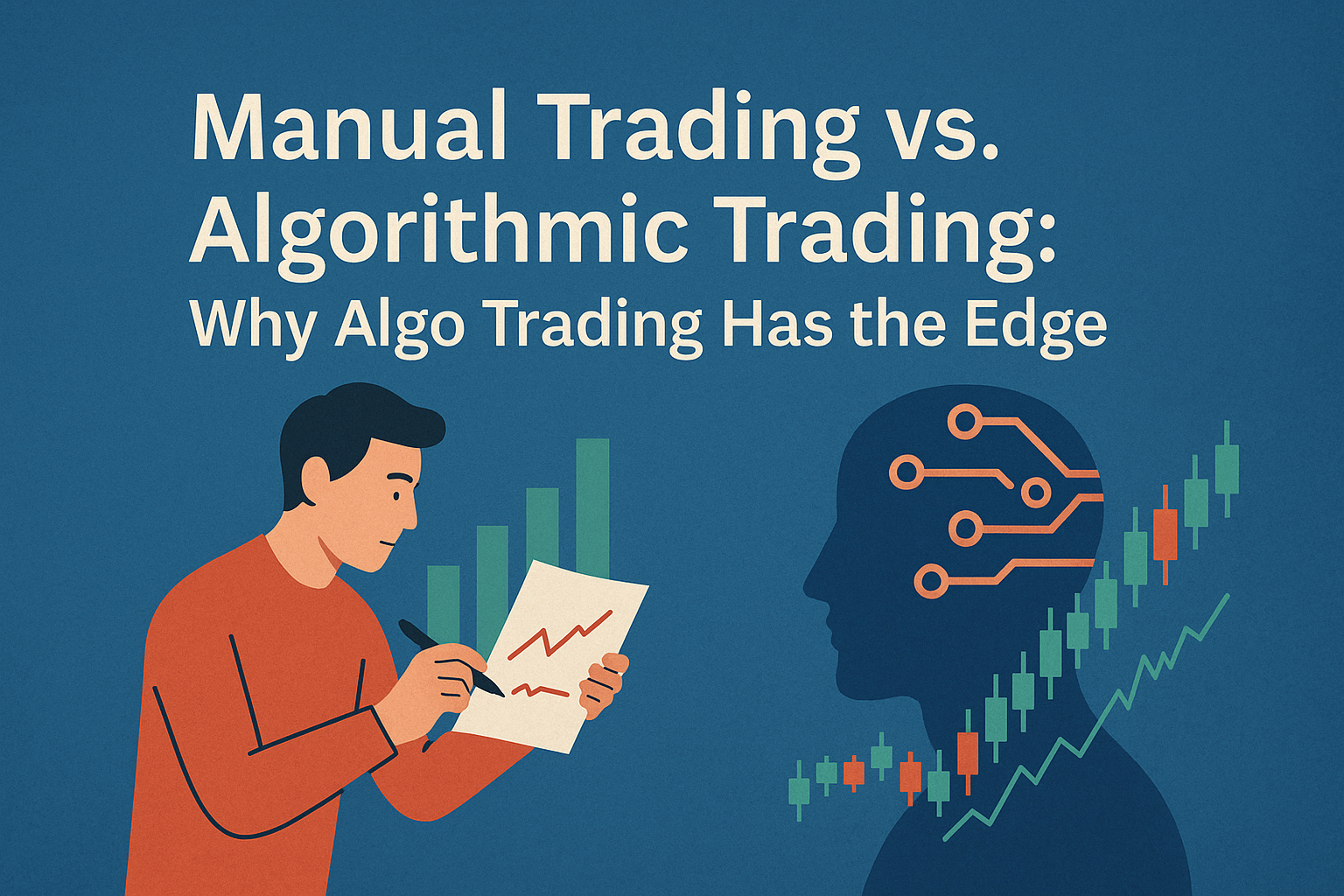The financial markets are evolving faster than ever, and with that comes the need for smarter, more efficient trading methods. In this landscape, two approaches dominate: manual trading and algorithmic trading (algo trading). While both have their advantages, algo trading is proving to be the superior choice for modern investors and traders alike.
 Speed and Efficiency
Speed and Efficiency
Manual Trading relies on human reflexes and judgment, which introduces delays. A trader might analyze a chart, make a decision, and then place an order—but even a few seconds can mean missed opportunities in fast-moving markets.
Algorithmic Trading, on the other hand, executes trades in milliseconds. Using pre-programmed logic, it reacts instantly to market movements and can scan multiple instruments at once. Speed is the game-changer, and algo trading plays it best.
 Accuracy and Consistency
Accuracy and Consistency
Humans are prone to error—typos, distractions, and fatigue all impact trading decisions. Manual trading can be inconsistent.
Algorithms, however, follow exact rules with zero deviation. There’s no second-guessing, no misclicks—just pure, consistent execution every time.
 Emotional Discipline
Emotional Discipline
Fear, greed, and impatience often cloud judgment. Manual traders may abandon strategies after a loss or get overly aggressive after a win.
Algo trading removes this entirely. There are no emotions—only data and logic. This objectivity leads to more stable, long-term success.
 Market Coverage and Diversification
Market Coverage and Diversification
Manual traders are limited by time and focus. You can’t watch everything at once.
Algorithms, however, monitor multiple markets, time zones, and instruments simultaneously, enabling wider diversification and improved risk management.
 Backtesting and Optimization
Backtesting and Optimization
Manual strategies are hard to test rigorously. You’re often relying on instinct or limited data.
With algo trading, strategies can be backtested across years of historical data, allowing fine-tuning and improvement before any real money is involved.
 Cost and Resource Efficiency
Cost and Resource Efficiency
Manual trading demands full-time attention, leading to higher costs in both time and potential slippage.
Algorithms run in the background, requiring minimal supervision. They also typically achieve better pricing, reducing transaction costs and improving returns.
 Conclusion
Conclusion
Manual trading still has a place—especially for those who rely on intuition or discretionary methods. However, for those seeking speed, consistency, emotion-free execution, diversification, and scalability, algorithmic trading clearly holds the edge.
As markets become more complex and competitive, the future belongs to traders who embrace automation. Platforms like Algofinders.com, with strategies built by experts like Yogeshwar Vashishtha (M.Tech, IIT), make it easier than ever to adopt algorithmic trading with confidence.


